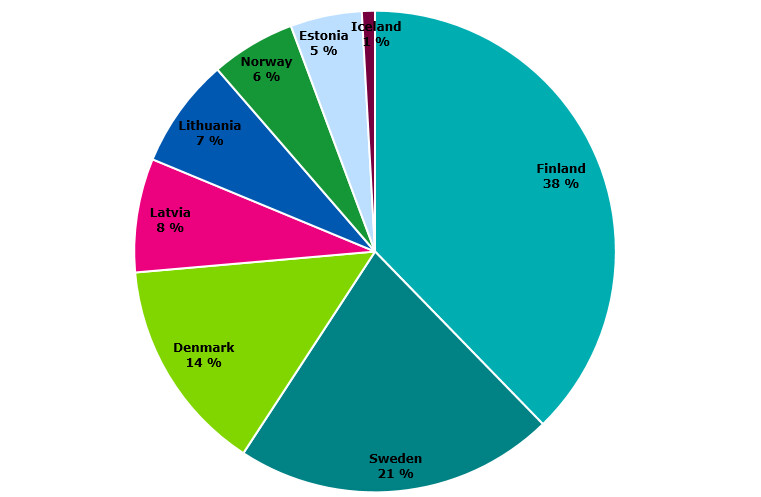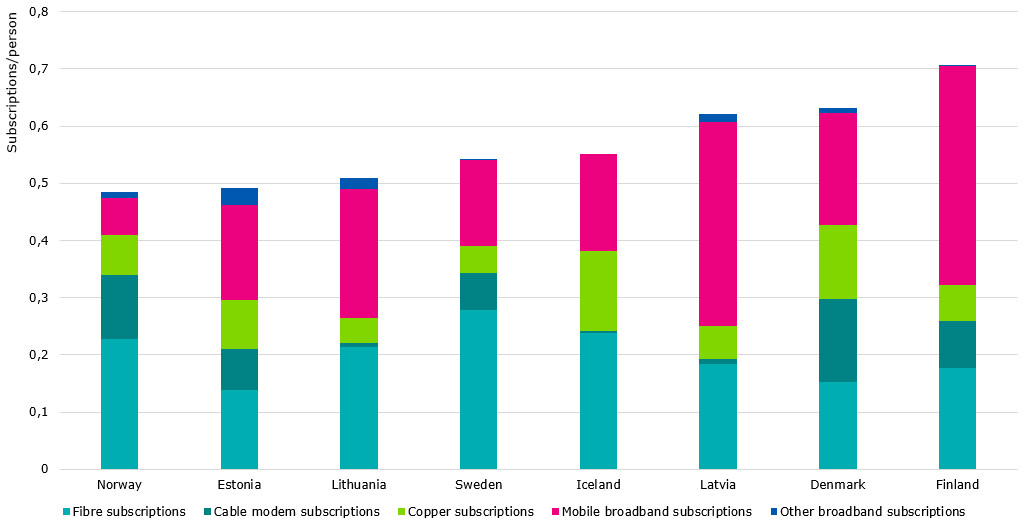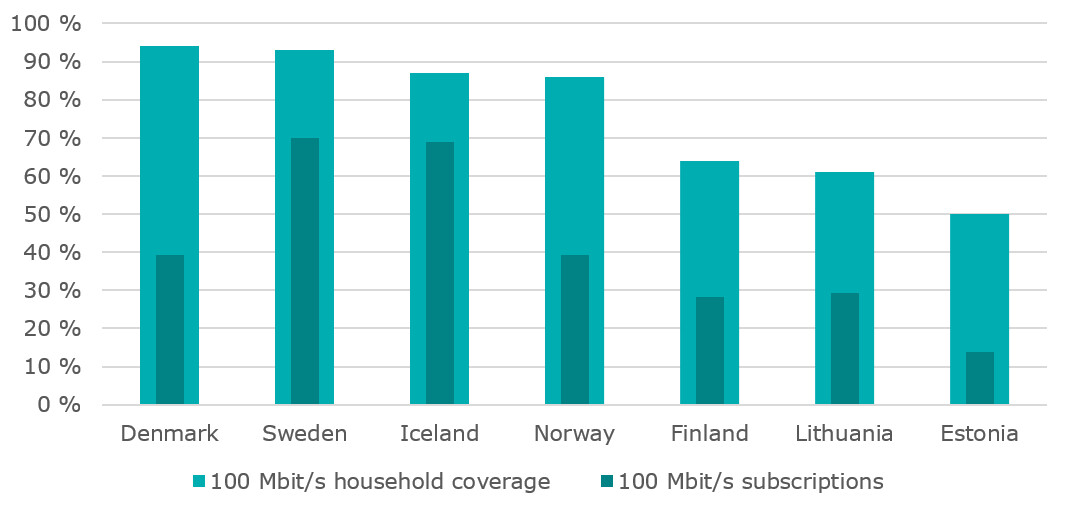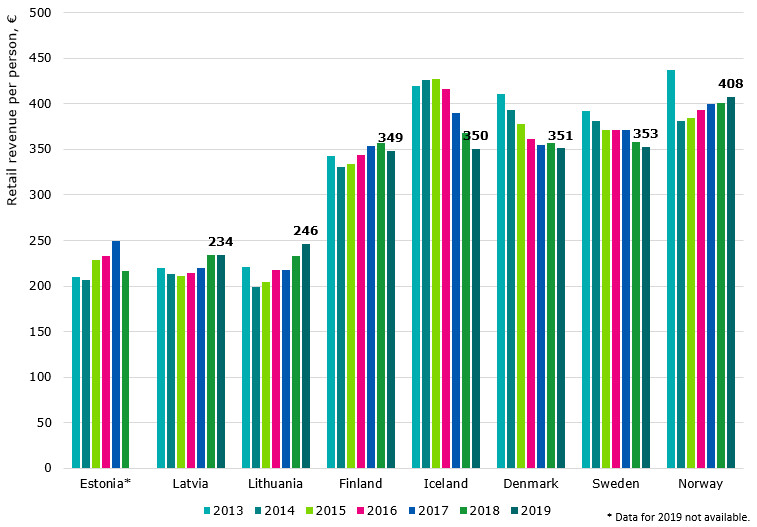The Nordic and Baltic countries are significant consumers of mobile data. In 2019, the volume of data transferred in mobile networks continued to increase in the entirety of both regions. While growth has been particularly rapid in the Baltics, Finland retains its status as the largest consumer of mobile data by a substantial margin. Finns make up only about a sixth of the two regions’ combined population, but use 38% of all mobile data.
A comparison of the usage of communications services in the Nordic and Baltic countries shows that the largest relative increase in the volume of mobile data used was observed in Lithuania, where consumption was up 50% on the previous year. As in years past, Finns used by far the most mobile data, with the per capita figure reaching 36.3 gigabytes in 2019. The other countries included in the comparison ranged from Norway's 5.6 gigabytes to Latvia’s 21.2 gigabytes.

Fibre now the number one fixed broadband technology in all Nordic and Baltic countries
While Finland plays in a league of its own in terms of mobile data consumption, it lags behind with regard to fixed connections. The year 2019 marked the first time that fibre, which allows for the fastest available data transfer rates, was the most common fixed-line broadband technology in all Nordic and Baltic countries. The number of cable modem subscriptions, which take advantage of the cable TV network, remained relatively stable in all studied countries while slower copper-based subscriptions were on the decrease.
Data-only mobile broadband subscriptions saw growth in all Baltic countries, but fell in the Nordics. According to data from late December 2019, Finland had the highest number of broadband subscriptions per capita. This figure included both fixed and data-only mobile broadband subscriptions. Alongside Finland, mobile broadband subscriptions enjoy a high degree of popularity in Latvia.

Denmark and Sweden boast the highest availability of fast fixed-network connections
The availability of very fast fixed-network subscriptions (download speeds exceeding 100 Mbps) was highest in Denmark and Sweden. Over 90% of households in both countries had access to a fast fixed-network connection. Iceland saw the largest increase in availability, with the number of households with access going from 78% to 87%. In terms of fast fixed-network connections in use, Sweden topped the list with 0.7 subscriptions per household. Meanwhile, 64% of Finnish households had access to fast connections in late 2019, with 0.28 fast subscriptions in use per household. No availability data was provided for Latvia.

In 2019, retail revenues from telecommunications operations remained relatively steady compared with the previous year. Per capita retail revenues from mobile network services and fixed-network telephone and broadband services in Finland, Iceland, Denmark and Sweden were approximately 350 euros per year, while the equivalent figure was over 400 euros per year in Norway and less than 250 euros in Latvia and Lithuania. An upward trend could be seen in Norway, Latvia and Lithuania, but retail revenues decreased in the other studied countries. Data was not yet available for Estonia.

Norway in the process of replacing its copper network
In 2019, tangible investments made by telecommunications operators in telecom networks followed the trend set in previous years, with significant growth in Norway and Denmark. The large investments made in Norway came as the country is in the process of replacing all DSL and copper connections by the end of 2022, necessitating investment in other technologies. By contrast, investments in telecom networks are on the decrease in the other Nordic and Baltic countries. 89 euros per capita were invested in telecom networks in Finland last year, compared with 231 euros in Norway. While investment levels in Sweden have declined every year since 2017, the per capita figure remained at over 130 euros.
The data is based on statistics compiled by the public authorities responsible for supervising the telecommunications markets in the Nordic and Baltic countries.
Enquiries and further information
Read more about the statistics in the presentation on Traficom's website (External link).
The Swedish Post and Telecom Authority (PTS) publishes the statistics on its website (External link) (available in Swedish and English).
Elina Pallas, Senior Specialist, tel. +358 295 390 126, elina.pallas(at)traficom.fi